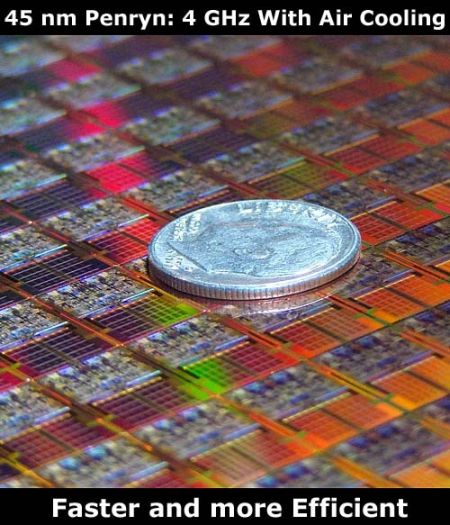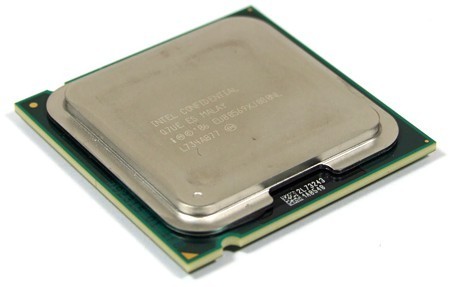Intel's 45 nm Penryn CPU: 4 GHz Air Cooled
Revamping The Core 2 Architecture - New Flagship: Extreme QX9650

Rarely have things looked as good for Intel as they do right now. Exactly 18 months after the introduction of Intel's highly successful Core 2 CPUs, the chipmaker is updating them. It is shrinking the structures from 65 nm to 45 nm (Penryn refers to Intel's new family of 45 nm CPUs, dual and quad core), and is already preparing the next step: the transition to the Nehalem platform. However, that's all still in the future, and won't come to pass until the end of 2008 at the earliest.
The revision of the Conroe architecture - in order to boost its performance, incorporate new instructions, and, most importantly, reduce power consumption - is right on schedule. Until now, Intel's Core 2 processors always played second fiddle to AMD's Athlon 64 X2 processors when it came to power consumption, at least in idle operation. That was also the reason why we built our Solar-PoweredPC around an AMD platform. However, this situation has changed with the Penryn core of Intel's Core 2 Extreme QX9650. Compare Prices on Core 2 Extreme QX9650
Simultaneously, Intel has also made radical changes to its production process, breaking with the conventional method. Instead of producing MOSFET transistors inside the CPU via the conventional silicon-oxide technique in use since 1960, Intel now fabricates the transistors using a new High-K Dielectric technique. As a result, the Penryn core has improved over the previous CPU generation in several ways.
Before we begin, we should note the following about our tests. Since AMD was unable to supply us with a 4x4 system, we are using AMD's fastest dual-core processor, the Athlon X2 6400+ Black Edition, for this comparison instead. Of course the complex dual-socket system has practically no real presence in the market, but we nonetheless feel obligated to mention it, just to be fair. Also, we want you to understand why we are comparing Intel's quad-core CPU to a dual-core processor from AMD. For now, since we don't have any alternatives, it's the best we can do until Phenom arrives.

This is what we can tell you after several nights of burning the midnight oil, grueling tests and experiencing the deficiencies of several components first-hand. The new processors, which are now produced on a 45 nm fabrication process, not only consume phenomenally little energy, they also offer outstanding overclocking potential. Even with the processor overclocked to its limit, its thermal dissipation and power consumption are almost on par with those of today's Core 2 CPUs - at their default settings. The new SSE4 instruction set and the larger L2 Cache of 12 MB are meant to give the already speedy Core 2 architecture another performance boost. Does this really make sense?
We already saw several overclocked systems using quad-core Penryns at this year's IDF in San Francisco, as mentioned in our articles Intel Shows off Hotrod PC with 8 CPUs and 4 Graphics Cards and 5.9 GHz Quad-Core Sets new Records.

Join our discussion on this article!
Get Tom's Hardware's best news and in-depth reviews, straight to your inbox.
Current page: Revamping The Core 2 Architecture - New Flagship: Extreme QX9650
Next Page New Dielectric Minimizes Leakage CurrentsTom's Hardware is the leading destination for hardcore computer enthusiasts. We cover everything from processors to 3D printers, single-board computers, SSDs and high-end gaming rigs, empowering readers to make the most of the tech they love, keep up on the latest developments and buy the right gear. Our staff has more than 100 years of combined experience covering news, solving tech problems and reviewing components and systems.
